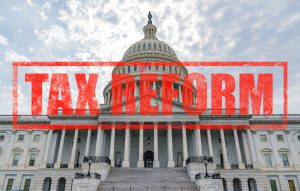In determining gain or loss on sale of a partnership interest, taxpayers are often surprised to find they have a taxable gain.
For income tax purposes gain or loss is the difference between the amount realized and adjusted basis of the partnership interest in the hands of the partner.
Amount Realized
The amount the partner will realize will include any cash and the fair market value of any property received. Further, if the partnership has liabilities, the amount realized will include the partner’s share of the partnership liabilities. If the partner remains liable for the debt, the amount realized will not include the partner’s share of the liability.
Examples of Amount Realized:
Example 1 – Sale of Partnership interest with no debt:
Amy is a member in ABC, LLC which has no outstanding liabilities. Amy sells her entire interest to Dave for $30,000 of cash and property that has a fair market value of $70,000. Amy’s amount realized is $100,000.
Example 2 – Sale of partnership interest with partnership debt:
Amy is a member of ABC, LLC and has a $23,000 basis in her interest. Amy’s membership interest is 1/3 of the LLC. When Amy sells her 1/3 interest for $100,000 the partnership has a liability of $9,000. Amy’s amount realized would be $103,000 ($100,000 + ($9,000 x 1/3).
Gain Realized
Generally, a partner selling his partnership interest recognizes capital gain or loss on the sale. The amount of the gain or loss recognized is the difference between the amount realized and the partner’s adjusted tax basis in his partnership interest.
Example 1 (from above)- Sale of Partnership interest with no debt:
Assume Amy’s basis was $40,000. Amy would realize a gain of $60,000 ($100,000 – $40,000).
Example 2 (from above) – Sale of partnership interest with partnership debt:
Amy’s basis was $23,000. Amy would realize a gain of $80,000 ($103,000 realized less $23,000 basis).
Character of Gain
Partnership taxation establishes the general rule that gain on sale a partnership interest receives favorable capital gain treatment. However, gains attributable to so-called “hot assets,” which include inventory, depreciation recapture, and accounts receivable of a cash basis partnership are taxed at less favorable ordinary income rates.
To the extent that a sale is attributable to the selling partner’s share of the hot assets, the resulting gain or loss is taxed at ordinary income rates. When real estate is sold to the extent the gain on sale is attributable to depreciation deductions, the resulting gain is treated as unrecaptured IRC §1250 section gain. §1250 gain is taxed at a flat 25% rate.
Like-Kind Exchange
It is important to note that in IRC §1031 (like-kind exchange), non-recognition treatment does not apply to exchanges of partnership interests.
We’ve Got Your Back
If you’re selling your partnership interest, we can help you plan the sale so that you pay no more tax than necessary. Contact Simon Filip, the Real Estate Tax Guy, at sfilip@krscpas.com or 201.655.7411 today.



 For taxable years beginning after December 31, 2017 and before January 1, 2026, non-corporate taxpayers (individuals, trusts, and estates) may take a deduction equal to 20 percent of Qualified Business Income (QBI) from partnerships, S corporations, and sole proprietorships.
For taxable years beginning after December 31, 2017 and before January 1, 2026, non-corporate taxpayers (individuals, trusts, and estates) may take a deduction equal to 20 percent of Qualified Business Income (QBI) from partnerships, S corporations, and sole proprietorships. Basic Rules for Individuals
Basic Rules for Individuals
 The Tax Cut and Jobs Act (TCJA) was signed into law on December 22, 2017, and took effect on January 1, 2018. Included in the political promise of tax simplicity and historically large tax cuts to middle-income households were amendments to existing tax code, including
The Tax Cut and Jobs Act (TCJA) was signed into law on December 22, 2017, and took effect on January 1, 2018. Included in the political promise of tax simplicity and historically large tax cuts to middle-income households were amendments to existing tax code, including  Tax Cuts and Jobs Act (“TCJA”)
Tax Cuts and Jobs Act (“TCJA”) A passive loss from a real estate activity occurs when your rental property’s expenses exceeds its income. The undesirable consequence of passive losses is that a taxpayer is only allowed to claim a certain amount of losses on their tax return each year.
A passive loss from a real estate activity occurs when your rental property’s expenses exceeds its income. The undesirable consequence of passive losses is that a taxpayer is only allowed to claim a certain amount of losses on their tax return each year. One of the most valuable assets a taxpayer will ever sell is their personal residence. Under
One of the most valuable assets a taxpayer will ever sell is their personal residence. Under